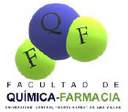Executive Secretary

7th International Symposium of Pharmaceutical Sciences
VII SICF
Abstract
The ultraviolet (UV) component of sunlight is high on the earth surface, especially at low latitudes, raising the risk of skin diseases, including cancer. The use of natural compounds is a strategy to protect people against UV damage. Seaweeds are becoming increasingly influential in the food industry, and are also used in the pharmacy and cosmetic industries, due to several bioactive demonstrated properties. This work analyzed the genotoxic and protective effects of the aqueous extracts of two seaweed species: Bryothamnion triquetrum and Halimeda incrassata. A cell-free plasmid DNA assay was employed, allowing detection of DNA breaks. The plasmids were exposed to increasing concentrations of aqueous extracts. DNA break was produced at concentrations of 2.0 and 4.0 mg/mL in both seaweed extracts and, consequently, a genotoxic effect is postulated. This effect arises with higher exposure times. Additionally, different combinations of plasmid DNA, restriction enzymes (Eco RI, Bam HI, and Pvu II) and extracts were assayed. The extracts did not produce an interference effect in the reconnaissance of the specific restriction target sequences of each enzyme. Protective activity of the extracts was evaluated in UVC-irradiated plasmids. None of the extracts displayed DNA protective effects in this assay.
Resumen
The ultraviolet (UV) component of sunlight is high on the earth surface, especially at low latitudes, raising the risk of skin diseases, including cancer. The use of natural compounds is a strategy to protect people against UV damage. Seaweeds are becoming increasingly influential in the food industry, and are also used in the pharmacy and cosmetic industries, due to several bioactive demonstrated properties. This work analyzed the genotoxic and protective effects of the aqueous extracts of two seaweed species: Bryothamnion triquetrum and Halimeda incrassata. A cell-free plasmid DNA assay was employed, allowing detection of DNA breaks. The plasmids were exposed to increasing concentrations of aqueous extracts. DNA break was produced at concentrations of 2.0 and 4.0 mg/mL in both seaweed extracts and, consequently, a genotoxic effect is postulated. This effect arises with higher exposure times. Additionally, different combinations of plasmid DNA, restriction enzymes (Eco RI, Bam HI, and Pvu II) and extracts were assayed. The extracts did not produce an interference effect in the reconnaissance of the specific restriction target sequences of each enzyme. Protective activity of the extracts was evaluated in UVC-irradiated plasmids. None of the extracts displayed DNA protective effects in this assay.
About The Speaker

Ángel Sánchez Lamar






